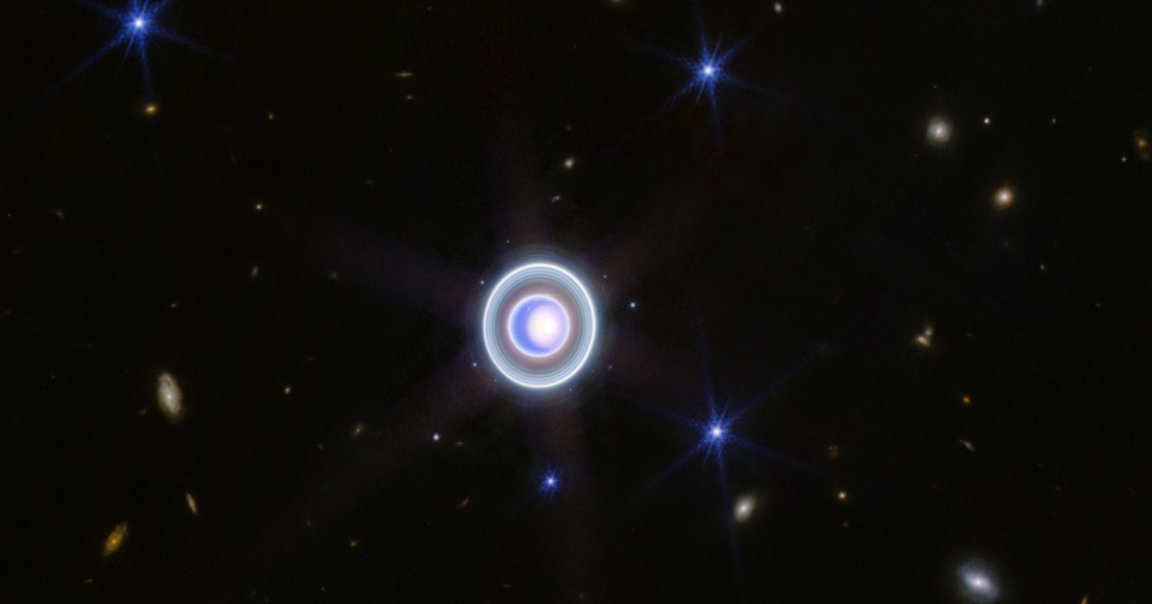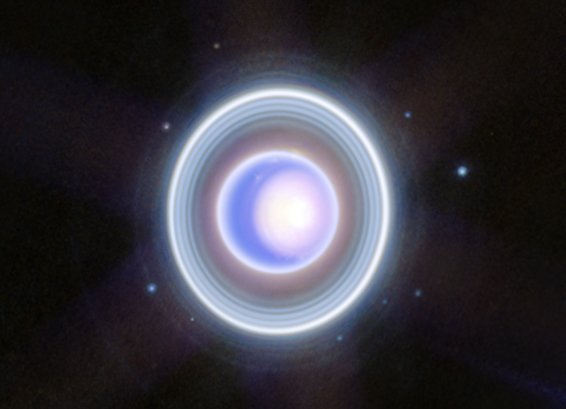
Rings of Uranus
NASA’s James Webb Space Telescope has gotten an unprecedented, close-up look at the rings of Uranus.
The stunning high-resolution image shows all of the distant planet’s inner and outer rings, as well as its 27 known moons.
These latest observations could help NASA plan future missions to the seventh planet from the Sun. They can also help us understand the meteorological systems of planets of its size in other parts of the universe.

Pale Blue Dot
While visible wavelength images of Uranus taken by NASA’s Voyager 2 probe around 40 years ago only showed the planet as a small blue ball, infrared observations have since revealed far more features.
Thanks to the James Webb’s incredibly sensitive scientific instruments, which cover the full range of the infrared spectrum, we can now see the planet’s cloudy north pole as well as a number of storms roiling inside Uranus’ atmosphere.
The planet spins around its own axis at a highly unusual 98-degree tilt, giving it the “most extreme seasons in the solar system,” per NASA. That means one pole spends 21 Earth years completely plunged in darkness as the Sun shines upon the other pole.
The latest image builds on a previous image of Uranus snapped by the JWST earlier this year that shows 11 of the planet’s 13 rings in unprecedented detail. The image was a massive upgrade over images taken by NASA’s Hubble Space Telescope, which was unable to see the planet’s fainter rings.
NASA scientists have called on the agency to launch an exploratory probe to explore Uranus and its moons to get a better sense of how they were formed, as well as the planet’s atmosphere and rings.
And thanks to the James Webb’s latest image, scientists just got a much better sense of how to do just that.
More on Uranus: Scientists Simulate What It’s Like to Dive Into Uranus